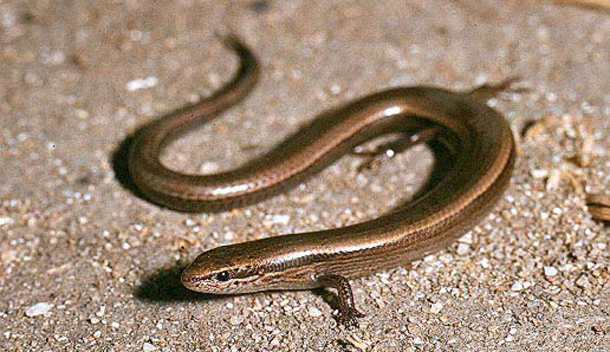Atavism is the tendency to revert to ancestral type. In biology, an atavism is an evolutionary throwback, such as traits reappearing which had disappeared generations before. Atavisms can occur in several ways. One way is when genes for previously existing phenotypical features are preserved in DNA, and these become expressed through a mutation that either knock out the overriding genes for the new traits or make the old traits override the new one. A number of traits can vary as a result of shortening of the fetal development of a trait (neoteny) or by prolongation of the same. In such a case, a shift in the time a trait is allowed to develop before it is fixed can bring forth an ancestral phenotype.
In the social sciences, atavism is a cultural tendency—for example, people in the modern era reverting to the ways of thinking and acting of a former time. The word atavism is derived from the Latin atavus. An atavus is a great-great-great-grandfather or, more generally, an ancestor.
Atavism in History
In addition, the concept of atavism as part of an individualistic explanation of the causes of criminal deviance was popularised by the Italian criminologist Cesare Lombroso in the 1870s. He attempted to identify physical characteristics common to criminals and labeled those he found as atavistic, ‘throwback’ traits that determined ‘primitive’ criminal behavior. His statistical evidence and the closely related idea of eugenics have long since been discredited, but the concept that physical traits may affect the likelihood of criminal or unethical behavior in the individual strangely still has some scientific support.
The notion that somehow, atavisms could be made to accumulate by selective breeding, or breeding back, led to breeds such as the Heck cattle. This had been bred from ancient landraces with selected primitive traits, in an attempt of “reviving” the extinct aurochs.
Examples

- Hind legs on whales or snakes
- Hind fins on dolphins
- Extra toes on horses, as in archaic horses
- Re-emergence of sexual reproduction in the flowering plant Hieracium pilosella and the Crotoniidae family of mites.
- Teeth in chickens
Examples in Humans
- Humans with extra nipples (Accessory breast)
- Humans with large canine teeth
“Multi-cell Organisms”. Universe-review.ca. Retrieved 2011-09-29.
TalkOrigins Archive. “29+ Evidences for Macroevolution: Part 2”. Archived from the original on 29 October 2006. Retrieved 2006-11-08.
Held, L. (2009). Quirks of Human Anatomy, an Evo-Devo Look at the Human Body. Cambridge University Press. ISBN 978-0-521-73233-8.
Collin, R.; Cipriani, R. (2003). “Dollo’s law and the re-evolution of shell coiling”. Proceedings of the Royal Society B 270 (1533): 2551–2555. doi:10.1098/rspb.2003.2517. PMC 1691546. PMID 14728776. edit
Tyson, R.; Graham, J. P.; Colahan, P. T.; Berry, C. R. (2004). “Skeletal atavism in a miniature horse”. Veterinary radiology & ultrasound : the official journal of the American College of Veterinary Radiology and the International Veterinary Radiology Association 45 (4): 315–317. PMID 15373256. edit
Domes, K.; Norton, R. A.; Maraun, M.; Scheu, S. (2007). “Reevolution of sexuality breaks Dollo’s law”. Proceedings of the National Academy of Sciences 104 (17): 7139–7144. doi:10.1073/pnas.0700034104. PMC 1855408. PMID 17438282. edit
David Biello (2006-02-22). “Mutant Chicken Grows Alligatorlike Teeth”. Scientific American. Retrieved 2009-03-08.
“What our tails tell us”. Los Angeles Times. 2007-02-15. Archived from the original on 12 March 2009. Retrieved 2009-03-08
Walia, I.; Arora, H. S.; Barker, E. A.; Delgado Rm, 3.; Frazier, O. H. (2010). “Snake Heart: A Case of Atavism in a Human Being”. Texas Heart Institute journal / from the Texas Heart Institute of St. Luke’s Episcopal Hospital, Texas Children’s Hospital 37 (6): 687–690. PMC 3014134. PMID 21224948. edit
“http://www.criminology.fsu.edu/crimtheory/lombroso.htm” Retrieved on 26 July 2012-2014.
Haselhuhn, M. P.; Wong, E. M. (2011). “Bad to the bone: Facial structure predicts unethical behaviour”. Proceedings of the Royal Society B: Biological Sciences 279 (1728): 571–6. doi:10.1098/rspb.2011.1193. PMID 21733897. edit
An example of this usage of the term can be found in Friedrich A. Hayek (1978). “The Atavism of Social Justice”. New Studies in Philosophy, Politics, Economics and the History of Ideas. Chicago: University of Chicago Press.
